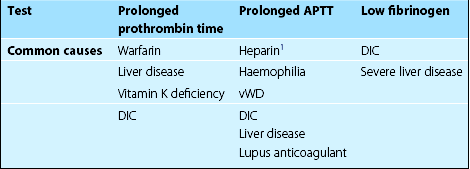10 Common clinical causes of abnormal first-line coagulation tests are shown in Table 10.1. Second-line tests may be needed for more precise diagnosis. In mixing experiments (or correction tests) patient plasma is mixed with normal or factor-deficient plasma prior to repeating first-line tests. If a particular coagulation factor is thought to be lacking, a quantitative assay can then be performed. A circulating inhibitor of coagulation is suggested by failure of the coagulation abnormality to be corrected by the addition of normal plasma. Many routine tests are now automated. Most coagulation instruments rely on measurement of changes in optical density to detect clot formation.
Laboratory haematology II – Coagulation and the acute phase response
Simple tests of blood coagulation
Quantitation of plasma fibrinogen
Oncohema Key
Fastest Oncology & Hematology Insight Engine




